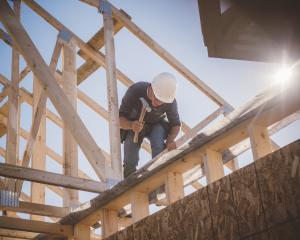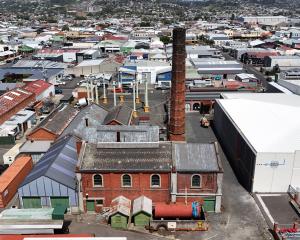
The Treasury emails, from two years ago, said the then minister of finance, Grant Robertson, and then minister of health Andrew Little had asked for ‘‘some scaling’’ following a rise in costs, but had not expected a major redesign proposing large clinical cuts, including re-lifeloss of beds and space for pathology.
The ministers had serious concerns, the emails said.
Dunedin health advocate Pete Hodgson, a previous chairman of a governance committee for the new hospital, said the revelation should be used by the current government as a warning to not repeat an exercise that would require clinical cuts and not save money.
‘‘Every time a new boss arrives, the instinct is to trash the work of earlier experts and assume that doing the same thing again will provide a different result.
‘‘As far as a redesigned inpatient block is concerned, delay and redesign will undoubtedly add costs.
‘‘The risk of cutting clinical capacity arises afresh, just as it did two years ago.’’
An Official Information Act request reveals that by then February 2023, $51.4million had been spent on consultancy fees, including (but not only) on the cost-cutting work, known as value management.
People working on the project within Health New Zealand were also being paid.
Health Minister Dr Shane Reti and Infrastructure Minister Chris Bishop said in September this year that the build had had a further budget blowout and the total cost for the hospital could approach $3billion. They said a smaller build or ward block refurbishment were the only two options.
An announcement is expected next month.
Mr Hodgson said the cost of delays alone was more than $1m every 10 days.
Unseen costs included project staff ‘‘twiddling their thumbs’’ and maintenance to keep the lights on in a ‘‘leaky, cramped hospital’’.
He rejected the option of ‘‘re-lifing’’ the existing ward block as financially risky, and added the effects of working as a doctor or nurse in a construction zone would be ‘‘beyond words’’.
One of the Treasury emails, sent from the private secretary of Mr Robertson and Mr Little in October 2022, had said: ‘‘When ministers were looking for some scaling, they did not have in mind that this would require redesign at the level proposed.
‘‘It is important we are clear on the difference between gross and net savings in the recommended proposal.
‘‘Ministers are very clear that they cannot have a situation where there is a loss of beds,’’ the private secretary’s email said.
‘‘Ministers are also very concerned as to how pathology services will now be delivered and that this might lead to further cost escalations down the track.’’
Another email from the civil servant pointed out that ‘‘Ministers are very aware that doing more design to try to achieve savings has its own costs that need to be considered and factored in’’.
Ministers were not the only people to complain.
In August 2022, the head of pathology provider Southern Community Laboratories — now called Awanui Labs — wrote to HNZ about the proposal to shrink pathology space to 14% of a previous proposal.
Then-chief executive Peter Gootjes described the move as part of an ongoing ‘‘saga’’ that was ‘‘not viable’’.
Mr Hodgson said that before the emails were sent he had ‘‘informally advised’’ ministers that delay costs were not included adequately in cost assessments and the advice ministers received ‘‘was therefore likely to be inaccurate’’.
The proposed redesign that the emails were responding to would have resulted in slightly fewer beds than the current hospital, he said.
Following ministerial pushback and a clinical review that warned of ‘‘high risk of patient harm’’, 32 beds were reinstated in a further redesign proposed in December 2022 that still included more cuts than proposed at the start of that year.
The pavilion building and one bridge to the outpatient building were removed, numbers of operating theatres and scanners were cut back and pathology services were reduced to an ‘‘acute clinical function’’.
In a process known as cold shelling, 12 fewer beds were planned for mental healthcare for older people — down from 24 — with space left for them to be added later.
By March 2023, HNZ’s delivery director, Monique Fouwler, said the government had agreed to pay $110m more to ‘‘manage market cost escalation and to complete the project’’, with the rest of a $200m cost escalation tackled through the redesign.
The building would start to go up in the first quarter of 2024 and be done by 2029.
Instead, 2024 has been a year of secrecy and worry, culminating in the public march in late September, a petition being handed to government last week, and still no release of pricing documents to support the government’s budget blowout claims.
A Treasury spokesman said the Ministry of Health was the ‘‘sole formal monitor’’ of the hospital build, but advice Treasury had recently provided to the government about the build would be released shortly.












